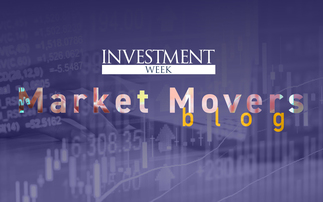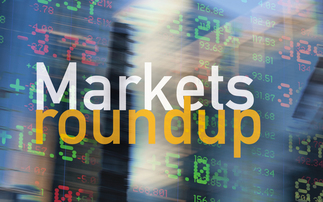The outlook for the global economy has deteriorated over recent months.
Despite a somewhat more positive start to the year than expected, with growth in both the United States and the euro zone surprising on the upside, the global manufacturing and trade outlook has worsened on fears of a protracted international trade conflict.
We have, once again, revised down our growth expectations for 2019 and 2020, with no meaningful recovery expected over the next 18 months (Figure 1). This downward revision reflects expectations of slower growth across most regions and leaves us somewhat below the current consensus for this year and next.
Figure 1. Global growth outlook (y/y)
We expect weaker business sentiment to weigh more heavily on growth

Looking across the major economies, only the United States is expected to deliver above-potential growth in 2019, with all the major economies at- or below-potential in 2020.
As a result, the steady erosion of spare capacity that has happened globally over much of the past decade is expected to stall and even reverse a little. That is expected to ease wage and price pressures and bring a more accommodative monetary policy stance (Figure 2).
Figure 2. Central banks are expected to ease policy
Market-based policy rate expectations

In our central scenario, we expect the combination of looser monetary and fiscal policy will be enough to stave off a more serious downturn. Historically, global growth below around 2½ per cent was consistent with a recession. While we do not expect further deterioration of that size, the balance of risks to our outlook is judged to be to the downside.
Early in 2019 it had looked as though trade tensions were easing, with a temporary truce between the US and China expected to lead to an agreement in around April or May for the US to ease tariffs and limit non-tariff restrictions. In return, China was expected to increase its purchases of US goods, tighten its protections around foreign firms' intellectual property rights and further open up its market to foreign competition.
However, on 5 May President Trump announced an immediate increase in existing tariff rates and a planned expansion of tariffs against all Chinese imports. That came after an apparent rejection of the draft trade agreement by the Chinese leadership. Around the same time, the US undertook restrictive actions against Chinese telecommunications company, Huawei, limiting its ability to deal with US companies or government bodies.
These actions, once again, raised the stakes in the trade dispute that began in 2018 and reinforced the fears that the negative impact on business sentiment and investment already seen would persist for longer. Just a few weeks later, Trump then threatened tariffs against Mexico, the United States' largest trading partner, over perceived inaction on border security. While that threat was later withdrawn, it was significant in moving the protectionist actions into a new sphere that was unrelated to real or perceived trading imbalances.
And while Presidents Trump and Xi agreed to a continuing dialogue at the G20 meeting at the end of June, we expect the US protectionist bias to remain in place throughout this Presidency and beyond, with regular flare-ups likely against a range of countries. That will weigh on growth by itself. However, should those flare-ups result in further actions, it could be enough to drive an already soft global economy into recession.
With inflationary pressures still muted - only in the US has inflation been close to the central bank target - the expected continuation of tepid, below potential, growth has resulted in a marked change in the outlook for monetary policy.
In the US, the Federal Reserve has indicated that it is likely to cut rates this year, a far cry from its expectations of further increases just six months ago. The market has moved to price over 100bps of cuts over the next year. While we do not expect that much to be delivered in our central scenario (where the US remains a relative outperformer again this year), we do think it likely that rates will be cut this year.
In the euro zone, the prospect of further easing from the ECB is once again on the table. Despite the limited choices given the existing level of rates and rules around asset purchases, we expect that it will move policy rates more deeply negative and adjust the parameters on the asset purchase programme to allow further QE.
Easier policy has already been forthcoming from the Reserve Banks of both Australia and New Zealand, which we also expect to continue.
Meanwhile the combination of fiscal and credit easing in China has also broadened and been extended, reflecting the desire by authorities there to try to offset the impact of tariffs and slower global growth. More recently, those stimulus measures have included increased local government financing for infrastructure, a sign that the measures taken so far to boost household consumption and state-owned enterprises' investment have fallen short of what was needed.
The stimulus measures either taken or expected around the world have supported risky asset prices, despite the concerns about global growth prospects.
Since the Q2 House View was published three months ago, government bonds, corporate credit and developed market equities (particularly in the US) have all seen positive returns (Figure 3). Given the strength of global equity market returns this year, and with valuations around their long-run averages, the scope for a sustained move higher at this point seems limited, even with policy support. Indeed, with the balance of risks to growth strongly tilted to the downside, we see the risk to equity returns to be similarly tilted to the downside.
Figure 3. Lower bond yields boost safe and risky asset returns
Macro asset market performance since 2019Q2 House View

As a result, we have reduced our preference for equity risk to be broadly neutral (Figure 4). Combined with a modest preference for duration, our asset allocation view reflects our concern about the risks facing the global economy over the next year.
Figure 4. Asset allocation summary
Neutral equities, overweight credit

In our central scenario, the global economy avoids recession, and therefore we expect a corporate default cycle would also be avoided. That should be a good environment for positive carry strategies and as such, we prefer to be modestly overweight credit, both in the corporate and emerging market hard currency space. While the most marked change in interest rate expectations in recent months has been in the US, we do not expect that to lead to a materially weaker period for the US dollar. With heightened risk aversion and positive carry, we expect the dollar to remain supported over the year ahead.
Further Reading
Important information
Except where stated as otherwise, the source of all information is Aviva Investors Global Services Limited (AIGSL). As at 24 June 2019. Unless stated otherwise any views and opinions are those of Aviva Investors. They should not be viewed as indicating any guarantee of return from an investment managed by Aviva Investors nor as advice of any nature. Information contained herein has been obtained from sources believed to be reliable, but has not been independently verified by Aviva Investors and is not guaranteed to be accurate. Past performance is not a guide to the future. The value of an investment and any income from it may go down as well as up and the investor may not get back the original amount invested. Nothing in this material, including any references to specific securities, assets classes and financial markets is intended to or should be construed as advice or recommendations of any nature. This material is not a recommendation to sell or purchase any investment.
In the UK & Europe this material has been prepared and issued by AIGSL, registered in England No.1151805. Registered Office: St. Helen's, 1 Undershaft, London, EC3P 3DQ. Authorised and regulated in the UK by the Financial Conduct Authority. In France, Aviva Investors France is a portfolio management company approved by the French Authority "Autorité des Marchés Financiers", under n° GP 97-114, a limited liability company with Board of Directors and Supervisory Board, having a share capital of 17 793 700 euros, whose registered office is located at 14 rue Roquépine, 75008 Paris and registered in the Paris Company Register under n° 335 133 229. In Switzerland, this document is issued by Aviva Investors Schweiz GmbH, authorised by FINMA as a distributor of collective investment schemes.
In Singapore, this material is being circulated by way of an arrangement with Aviva Investors Asia Pte. Limited (AIAPL) for distribution to institutional investors only. Please note that AIAPL does not provide any independent research or analysis in the substance or preparation of this material. Recipients of this material are to contact AIAPL in respect of any matters arising from, or in connection with, this material. AIAPL, a company incorporated under the laws of Singapore with registration number 200813519W, holds a valid Capital Markets Services Licence to carry out fund management activities issued under the Securities and Futures Act (Singapore Statute Cap. 289) and Asian Exempt Financial Adviser for the purposes of the Financial Advisers Act (Singapore Statute Cap.110). Registered Office: One Raffles Quay, #27-13 South Tower, Singapore 048583. In Australia, this material is being circulated by way of an arrangement with Aviva Investors Pacific Pty Ltd (AIPPL) for distribution to wholesale investors only. Please note that AIPPL does not provide any independent research or analysis in the substance or preparation of this material. Recipients of this material are to contact AIPPL in respect of any matters arising from, or in connection with, this material. AIPPL, a company incorporated under the laws of Australia with Australian Business No. 87 153 200 278 and Australian Company No. 153 200 278, holds an Australian Financial Services License (AFSL 411458) issued by the Australian Securities and Investments Commission. Business Address: Level 30, Collins Place, 35 Collins Street, Melbourne, Vic 3000, Australia.
The name "Aviva Investors" as used in this material refers to the global organisation of affiliated asset management businesses operating under the Aviva Investors name. Each Aviva investors' affiliate is a subsidiary of Aviva plc, a publicly traded multi-national financial services company headquartered in the United Kingdom. Aviva Investors Canada, Inc. ("AIC") is located in Toronto and is registered with the Ontario Securities Commission ("OSC") as a Portfolio Manager, an Exempt Market Dealer, and a Commodity Trading Manager. Aviva Investors Americas LLC is a federally registered investment advisor with the U.S. Securities and Exchange Commission. Aviva Investors Americas is also a commodity trading advisor ("CTA") and commodity pool operator ("CPO") registered with the Commodity Futures Trading Commission ("CFTC"), and is a member of the National Futures Association ("NFA"). AIA's Form ADV Part 2A, which provides background information about the firm and its business practices, is available upon written request to: Compliance Department, 225 West Wacker Drive, Suite 2250, Chicago, IL 60606.
RA19/0801/01072020












